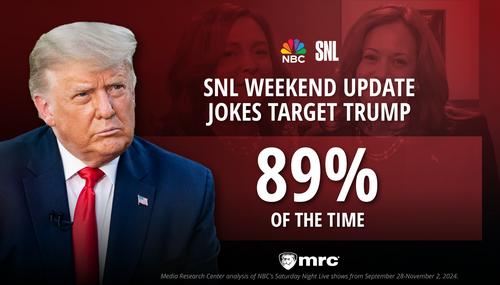
In the lead story of Thursday's National section, New York Times congressional correspondent (and Times Watch favorite) Carl Hulse quickly put the Times's stamp of approval on Democrat attempts to discredit anti-Obama-care protesters as violent racists in “After Health Vote, Democrats Are Threatened With Violence.” He even drug Internet images from the RNC and Sarah Palin into the mix. By contrast, the Times was conspicuously quiet during the 2004 presidential campaign concerning vandalism of G.O.P. campaign offices.
Hulse detailed the Democratic message of the week -- violent conservative protesters -- with no hint of how the party is exploiting the anecdotes of violence (some of which have not been documented). Interestingly, he includes Rep. Bart Stupak on the list as having “reported receiving threatening phone calls,” though Hulse fails to say whether they transpired before or after Stupak caved in and voted in favor of the health “reform” legislation.
Democratic lawmakers have received death threats and been the victims of vandalism because of their votes in favor of the health care bill, lawmakers and law enforcement officials said Wednesday, as the Congressional debate over the issue headed toward a bitter and divisive conclusion.
Representative Steny H. Hoyer, Democrat of Maryland and the majority leader, said at least 10 House members had raised concerns about their personal security since Sunday’s climactic vote, and Mr. Hoyer characterized the cases as serious.
At least two Congressional district offices were vandalized and Representative Louise M. Slaughter, a senior Democrat from New York, received a phone message threatening sniper attacks against lawmakers and their families.
Hulse then listed incidents of vandalism, allegations about racist faxes, and a “cut propane line to an outdoor grill” before putting the onus on congressional Republicans to denounce the violence of a few extremists:
As they prepared to leave Washington for a two-week recess, House Democrats met with Capitol Police and representatives of the Federal Bureau of Investigation to get advice on security issues, and they pressed Republicans to join them in renouncing threats and violence.
“What we want to be sure is that people know that these threats have no place in our country,” Speaker Nancy Pelosi said. “We have a legitimate disagreement. We have passed landmark legislation, and there are strong differences of opinion about it. Our Constitution allows us to have a lively debate in that regard, and that does not include threats to violence.”
Representative John A. Boehner of Ohio, the Republican leader, spoke out against violence but encouraged Americans to continue to find ways to counter the legislation. “I know many Americans are angry over this health care bill, and that Washington Democrats just aren’t listening,” Mr. Boehner said in a statement. “But, as I’ve said, violence and threats are unacceptable. That’s not the American way. We need to take that anger and channel it into positive change.”
There was a single paragraph of Hulse providing limited context, before lingering on the isolated anti-Democratic incidents:
Republicans also noted that their members have received threats in the past and that Senator Jim Bunning, Republican of Kentucky, was recently the target of abuse when he blocked added unemployment benefits.
Still, the dark and personal tone of the final stages of the health fight could complicate Republican efforts to maintain their attacks on the legislation if they are seen as inciting an undue level of outrage and, conversely, could bolster Democrats if opponents of the measure are seen as breaching the boundaries of civility.
The reports of threats, coming after a tense weekend when protesters hurled racial and homophobic slurs at Democrats and spit on one congressman, left many Democrats shaken.
Actually, that “spit” description has been challenged, as the MRC's Tim Graham argued. Rep. Emanuel Cleaver complained of a man "who allowed saliva to hit my face," which sounds like unintentional spittle, not a conscious act of contempt.
And it does seem odd that over a long Capitol Hill weekend clogged with cameras and the media, how few of these apparent slurs were captured for posterity.
Hulse went even further than most of the media, taking liberal hysteria over imagery by the Republican National Committee and on former Alaska governor Sarah Palin's Facebook page at face value, as if Republicans were inspiring violence against Democratic members of Congress:
Democrats also raised questions about some of the imagery and phrases being employed by Republicans against the Democratic architects and backers of the measure, noting that a Republican National Committee Web site urging supporters to fire Ms. Pelosi has her surrounded by flames. A Facebook page of Sarah Palin singling out Democratic members for defeat because of their votes defines their districts by the crosshairs of a weapon’s sight.
Republicans dismissed objections to the imagery. “The message of our Web site is clear, it is time to put Nancy Pelosi out of a job,” said Katie Wright, a spokeswoman for the Republican National Committee.
Glenn Reynolds at the Instapundit blog dredged up several stories from the media memory hole concerning vandalism of G.O.P. campaign offices during Bush's 2004 re-election drive, none of which appears to have received coverage in the New York Times, according to a Nexis search. (Here's more anti-Republican violence from 2004). MRC's Tim Graham has another useful angle, remembering that last week Democratic Rep. Bart Stupak was harassed with threatening phone calls from liberals for fighting Obama-care's abortion coverage.




